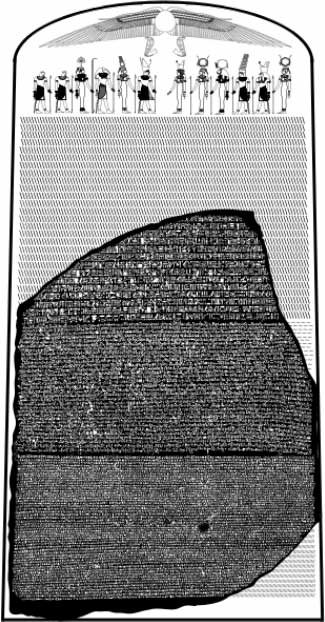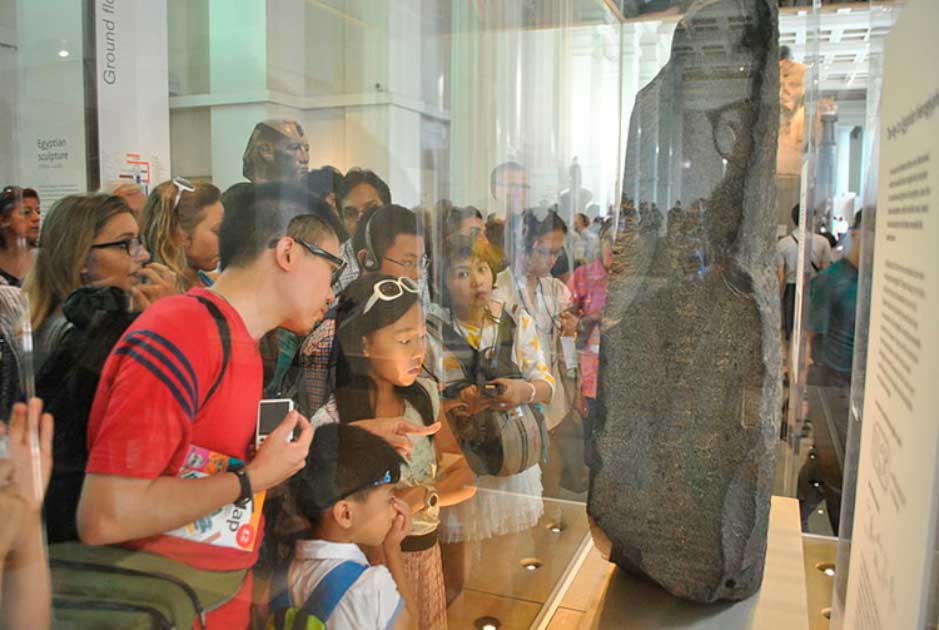The Rosetta Stone is world famous and without a doubt one of the most important archaeological finds in history. This unassuming stone, a dark-colored granodiorite stela covered in carved text, single handedly opened the world of ancient Egypt to modern researchers.
The stone is inscribed with three different scripts: Egyptian hieroglyphic, Greek, and Demotic. Crucially, because these three texts all say the same thing, the Egyptian hieroglyphs could be compared to the other, known languages. That meant that the meaning of the hieroglyphs could be understood for the first time, and in translating them the entirety of the Egyptian language, and thousands of years of their history, was laid bare.
The stone was first discovered in July 1799 by French soldiers during Napoleon’s invasion of Egypt, in the city of Rosetta. This city was situated near a tributary of the Nile, east of Alexandria, and the stone had been repurposed as building material.
The site itself had been well known by that point, with officer Pierre François Xavier Bouchard uncovering the large inscribed stone fragment alongside the forces of Napoleon who were constructing fortifications. The discovery was almost by chance.
Pierre François Xavier Bouchard, the French soldier who discovered the stone, had identified the importance of hieroglyphic scripts and the juxtaposed Greek. He predicted that a translation of a single text is represented through each script. He focused on translating the Greek description to know the meaning of the stela’s text, and to understand the hieroglyphs.
And he was right.
A Stone of Secrets
Napoleon however did not hold on to the stone for long. His invasion of Egypt in 1799 resulted in French defeat at the hands of the Ottoman Empire, supported by the British, in 1801. A year later the stone was moved to the British Museum, where it remains to this day.
The stone itself seems to have originally been part of the interior decorations of a temple. However it was reused as a foundation block for Fort Julien, a 15th century fortress near the town of Rosetta, and so the original context of the stone and its first purpose have been lost.

What survives is only a fragment, with the original stone being much larger. However he other parts of the stone have been found, either at Fort Julien or elsewhere, suggesting that it was only this portion of the stone which survived to be pressed into service as a foundation block.
However what had survived was enough. Although attempts had been made to decipher Egyptian before its discovery, with mixed success, the direct comparison between Egyptian and Greek allowed the hieroglyphs to be fully understood for the first time.
The first tentative translation of the stone was made as early as 1803, for the Greek portion only, with the Egyptian translating taking decades more. However, finally in 1822 the Egyptian portion was translated, and the secret of Egyptian hieroglyphs had been cracked.
The stone contained an official message, a decree about the new king Ptolemy V. This decree was copied onto stelae and added to every Egyptian temple, proclaimed Ptolemy V as divine and seeking to establish a cult of personality around the new ruler.
Helpfully, this dedication and the content of the stone even allows us to pinpoint the date of its creation. Ptolemy V was inaugurated by the priests of Memphis on “Four Xandikos” and “Eighteen Mekhir”, dates from the Macedonian and Egyptian calendars. These dates are known to modern archaeology, placing the stone’s creation around 196 BC.
- The Lost City of Thinis: Where is the First Capital of Ancient Egypt?
- Egyptian Monotheism? Akhenaten, the Heretic King
The decree, as mentioned, is inscribed three times, perhaps to ensure as wide a readership as possible. The text is written in Demotic (literally meaning “language of the people”, the Egyptian cursive script used regularly), hieroglyphs (suitable for a priestly decree), and Ancient Greek (the language of the administration, similar to medieval Latin in the Catholic Church).
When the Rosetta Stone was found, it was incomplete and broken, featuring 54 lines of Ancient Greek, 32 lines in Demotic, and only 14 lines of the hieroglyphic script. The hieroglyphs themselves would have been understood for many centuries after its construction and the text would have remained comprehendible to many.

However, with the fall of the Western Roman Empire in the 5th century AD much was lost, including the secret of the hieroglyphics. Ancient Egyptian hieroglyphs became a dead language, not to be revived for 1,400 years.
Other “Rosetta Stones”
Happily, other such inscriptions have been found throughout the history of archaeology which offer similar keys to unlock dead languages. For instance, the Behistun inscription is eventually compared to the Rosetta stone. It is considered to have links with the translations of three ancient Middle-Eastern languages such as Elamite, Old Persian, and Babylonian.
Such archaeological treasures, at first glance of little value and almost lost to time, are the true treasures of antiquity. The value of understanding millennia of Egyptian history, their pantheon and their culture, why they built great pyramids and why they stopped, and fundamentally who they were, outweighs all the treasures of Tutankhamun, or all the gold in Solomon’s legendary mine.
Top Image: The Rosetta Stone. Source: Negro Elkha / Adobe Stock.
By Bipin Dimri